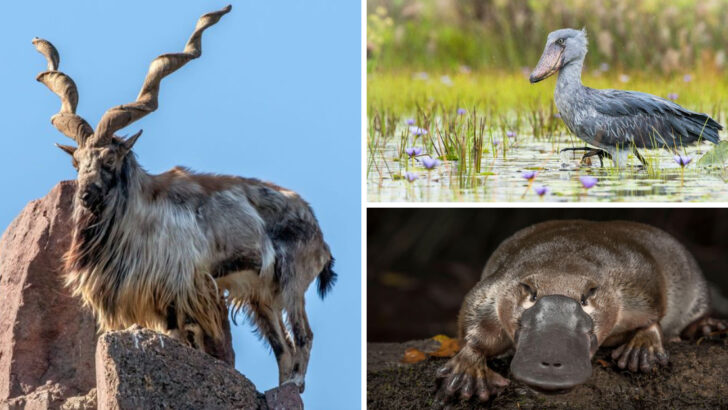Some animals are so bizarre, they almost seem too strange to be real. Forget the typical zoo lineup—there’s a whole world of creatures out there that will make your jaw drop and your mind race.
These aren’t the animals you see on nature documentaries or read about in textbooks. They defy logic, move in ways that leave you questioning everything you thought you knew, and have features that seem more like fantasy than biology.
Hidden in remote corners of the Earth, these creatures are living proof that nature still has a few tricks up its sleeve. From the downright eerie to the unexpectedly adorable, they prove that weirdness knows no boundaries.
Curious to meet them? Strap in—you’re about to discover some of the most astonishing animals on the planet.
Aye-Aye – Madagascar
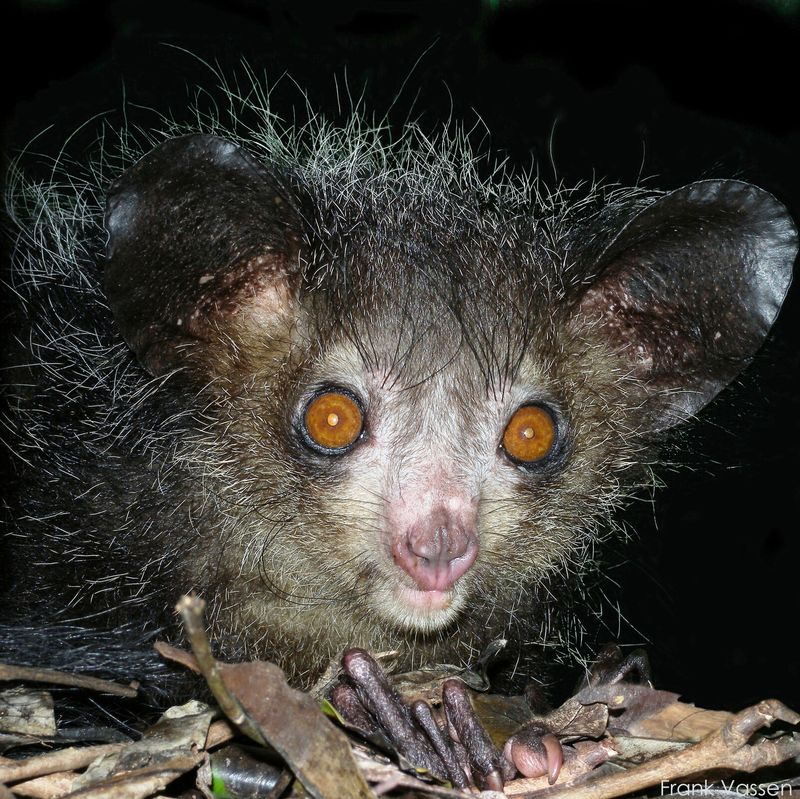
The Aye-Aye is a nocturnal lemur native to Madagascar, known for its peculiar appearance and behaviors. With large eyes and a bushy tail, it’s the elongated middle finger that truly sets this creature apart. This digit is specialized for tapping on trees to find hollow cavities where grubs reside.
Once detected, the Aye-Aye gnaws through the wood with ever-growing incisors to extract its prey, showcasing its unique adaptation among primates. Although its looks might be startling, the Aye-Aye plays a crucial role in its ecosystem. Sadly, due to superstitions, it faces threats from humans in its native habitat.
Saiga Antelope – Kazakhstan
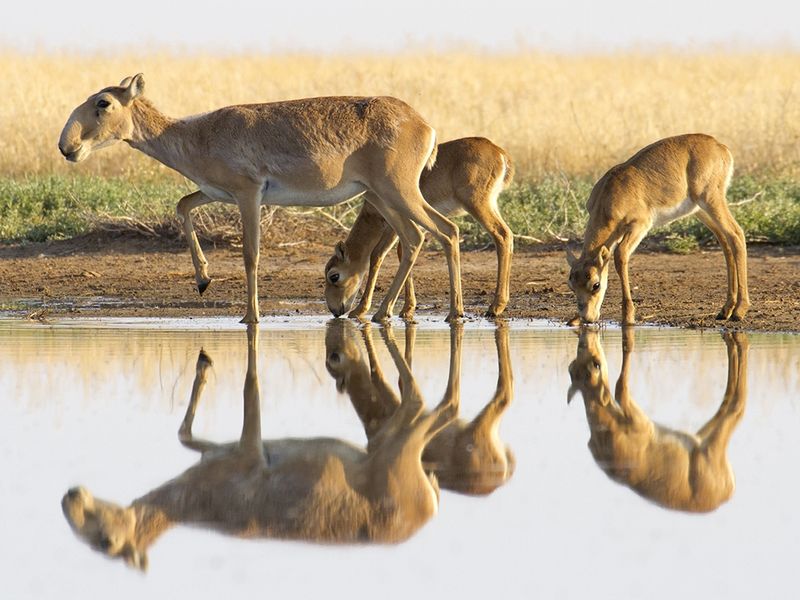
The Saiga Antelope, found primarily in the steppes of Kazakhstan, is renowned for its distinctive large, bulbous nose. This unique nose structure helps it filter out dust and regulate body temperature during extreme weather.
Roaming in herds, these antelopes are integral to their ecosystem, aiding in grassland health and biodiversity. Despite their ecological importance, Saiga Antelopes are critically endangered due to poaching and habitat loss.
Efforts are ongoing to protect these remarkable creatures and ensure their survival in the wild. Their bizarre appearance makes them one of nature’s true oddities.
Thorny Devil – Australia

The Thorny Devil is a small lizard native to the arid deserts of Australia, known for its spiny appearance and remarkable camouflage abilities. Its body is covered in conical spines, which help deter predators and collect water.
During rain, moisture is channeled along grooves between the spines directly to the mouth. This adaptation is vital for survival in such a harsh environment. The Thorny Devil’s ability to blend into the desert landscape is astonishing.
Despite its fierce look, this creature poses no threat to humans and primarily feeds on ants, serving an important role in the ecosystem.
Narwhal – Canada
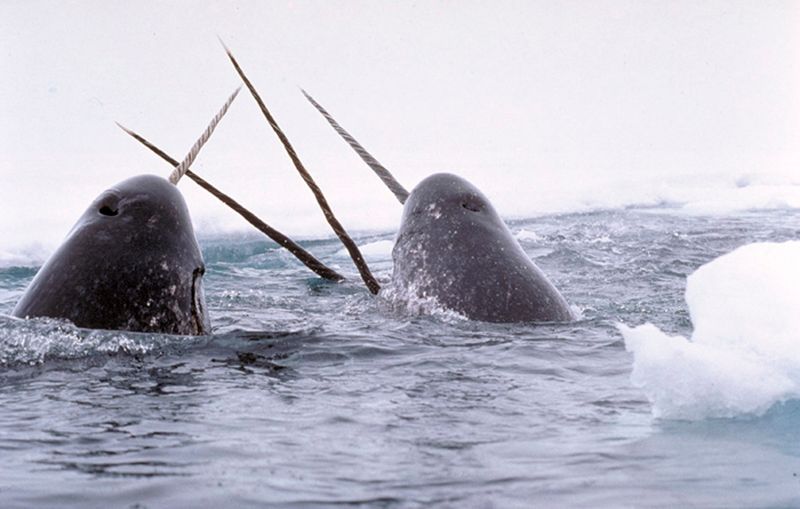
The Narwhal, often dubbed the ‘unicorn of the sea,’ inhabits the frigid Arctic waters of Canada. Known for the long, spiral tusk protruding from its head, the Narwhal’s tusk is actually an elongated tooth.
This unique feature plays a role in social interactions and possibly in sensing environmental changes. These social animals often move in pods and communicate through a variety of vocalizations.
Climate change and human activities pose threats to their habitat, prompting conservation efforts. The Narwhal remains one of the ocean’s most enigmatic and captivating creatures with its mysterious tusk.
Pangolin – Vietnam

Pangolins are unique mammals found in the forests of Vietnam, recognized for their protective keratin scales covering their bodies. When threatened, they curl into a tight ball, using their scales as armor against predators.
Apart from their defense mechanisms, pangolins are known for their long tongues, which they use to collect ants and termites. Unfortunately, they are the most trafficked mammals globally, primarily for their scales and meat.
Conservationists are working tirelessly to protect pangolins and curb illegal trade. These intriguing creatures play a critical role in pest control and maintaining ecological balance.
Okapi – Democratic Republic of Congo
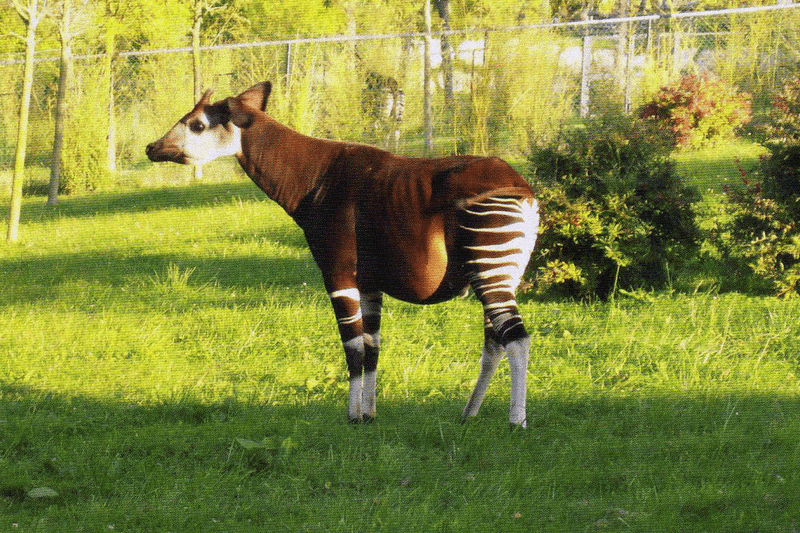
The Okapi, native to the Democratic Republic of Congo, is a unique creature often described as a ‘forest giraffe.’ Its zebra-like legs and giraffe-like head make it an intriguing sight.
Okapis are solitary animals, preferring the dense rainforest where they feed on vegetation using their long, prehensile tongues. Despite their elusive nature, they are vital to the forest ecosystem, aiding in seed dispersion.
Habitat loss and poaching pose significant threats to Okapis, leading to conservation efforts to protect these remarkable animals. Their mysterious allure continues to captivate those who learn about them.
Axolotl – Mexico

Native to the freshwater lakes of Mexico, the Axolotl is a fascinating amphibian, famous for its regenerative abilities. Unlike other salamanders, Axolotls retain their larval features throughout life, including external gills.
This neoteny allows them to regenerate lost limbs, spinal cords, and even parts of their heart and brain. Despite their resilience, Axolotls are critically endangered due to habitat loss and pollution.
Conservationists are actively working to preserve their natural habitat and increase awareness. Axolotls remain a subject of scientific research for their unique regenerative capabilities.
Proboscis Monkey – Borneo, Malaysia
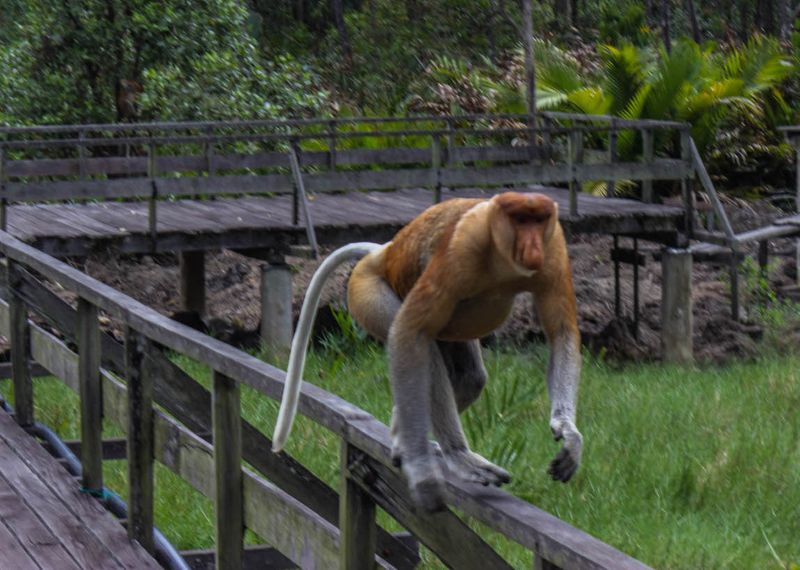
The Proboscis Monkey, native to the rainforests of Borneo, Malaysia, is known for its large, pendulous nose and striking orange fur. The male’s nose can reach up to 7 inches, possibly used to attract mates and amplify vocalizations.
These monkeys are adept swimmers, using webbed feet and hands to navigate through mangrove forests. Their diet primarily consists of leaves, seeds, and unripe fruits.
Unfortunately, habitat destruction threatens their population, prompting conservation efforts. The Proboscis Monkey’s distinctive appearance and behavior make it a fascinating subject for wildlife enthusiasts.
Tasmanian Devil – Tasmania, Australia
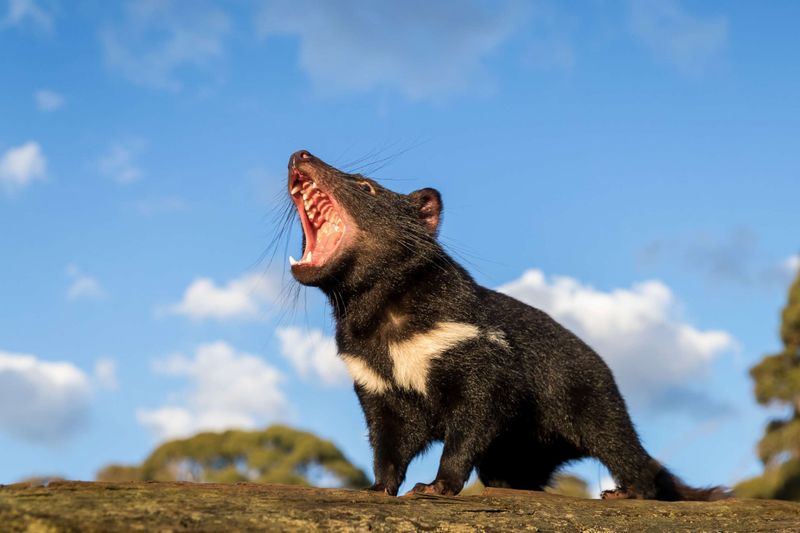
The Tasmanian Devil, native to the island state of Tasmania, Australia, is a carnivorous marsupial known for its feisty demeanor and distinctive black fur. It’s the world’s largest carnivorous marsupial, with powerful jaws and sharp teeth for devouring prey.
Their spine-chilling screeches and aggressive behavior during feeding are notable. Despite their fierce nature, they play a crucial role in the ecosystem as scavengers.
Unfortunately, they face threats from a contagious cancer known as Devil Facial Tumour Disease (DFTD), leading to conservation initiatives to save this iconic species.
Shoebill – Uganda
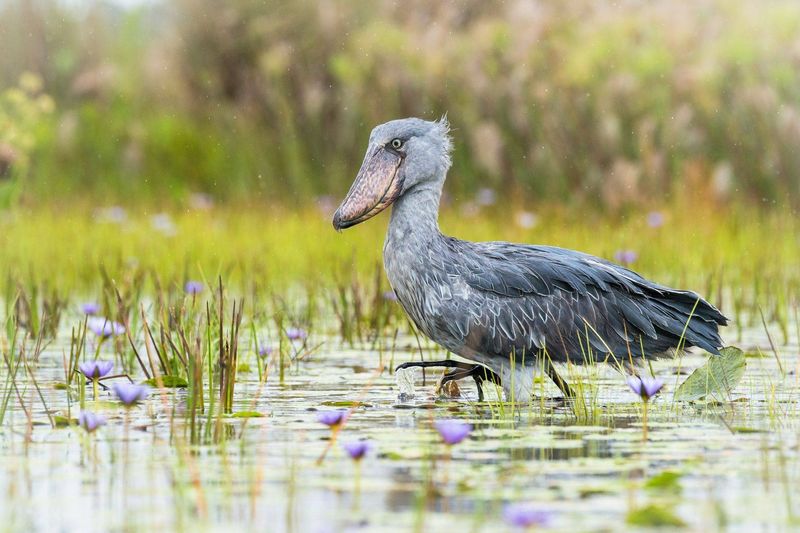
The Shoebill, found in the wetlands of Uganda, is a striking bird known for its enormous shoe-shaped bill. Standing tall with a prehistoric look, the Shoebill is an expert hunter, preying on fish and small reptiles.
Its hunting technique involves standing still for long periods before striking with precision. These solitary birds are a rare sight, making them a sought-after species for birdwatchers.
Habitat destruction poses a threat to their population, emphasizing the need for conservation efforts. The Shoebill’s unique appearance and behavior continue to fascinate those who encounter it.
Kakapo – New Zealand
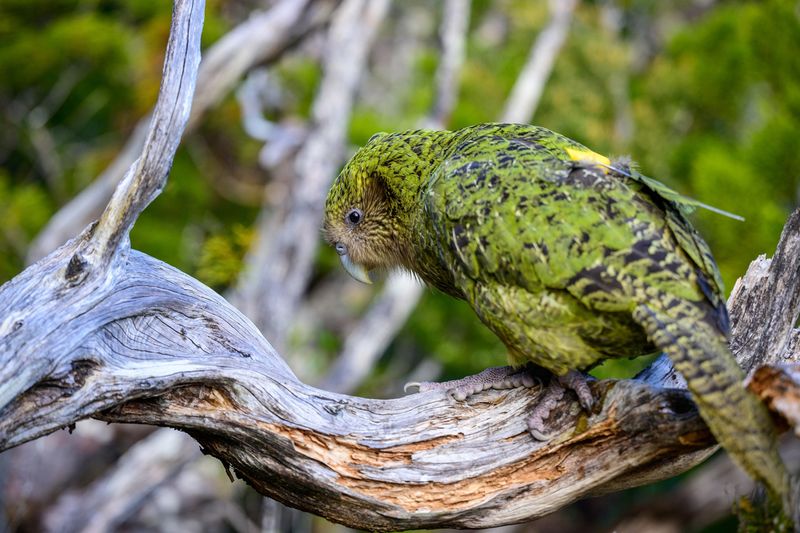
The Kakapo, native to New Zealand, is a flightless parrot known for its vibrant green feathers and nocturnal habits. As the world’s heaviest parrot, Kakapos are ground dwellers, relying on their strong legs for movement.
They have a unique mating call known as ‘booming,’ which resonates through the forest to attract females. Unfortunately, Kakapos are critically endangered due to introduced predators and habitat loss.
Conservation programs are in place to protect and increase their population. These charming birds are a testament to New Zealand’s unique wildlife heritage.
Fossa – Madagascar

The Fossa, Madagascar’s top predator, resembles a small cougar with its slender body and cat-like features. Despite its appearance, it’s more closely related to the mongoose family.
Fossas are agile climbers, using their tails for balance as they hunt lemurs and other prey in the rainforest canopy. Their solitary nature and elusive behavior make them a mysterious presence in Madagascar’s forests.
Deforestation and hunting pose threats to their survival, leading to conservation efforts. The Fossa’s unique role in the ecosystem highlights the importance of preserving Madagascar’s diverse wildlife.
Red-Lipped Batfish – Galápagos Islands, Ecuador

Native to the Galápagos Islands, the Red-Lipped Batfish is a peculiar fish known for its bright red lips and unusual body shape. Unlike most fish, it uses modified fins to ‘walk’ along the ocean floor.
Its red lips are thought to play a role in attracting mates, adding to its eccentric charm. Despite its odd appearance, it is a proficient predator, feeding on small fish and crustaceans.
The Red-Lipped Batfish embodies the unique biodiversity of the Galápagos Islands, reminding us of the incredible adaptations found in marine life.
Markhor – Pakistan

The Markhor, Pakistan’s national animal, is a wild goat known for its majestic twisted horns. Found in the rugged mountains, it is well adapted to steep terrains, showcasing remarkable agility.
Males use their impressive horns to battle during the mating season, a spectacle of strength and endurance. Unfortunately, poaching and habitat loss have led to their vulnerable status.
Efforts are being made to protect these captivating creatures, crucial for maintaining the ecological balance in their mountainous habitats. The Markhor’s grandeur continues to inspire those who witness it in the wild.
Sunda Colugo – Malaysia

The Sunda Colugo, also known as the flying lemur, isn’t a lemur or a great flier but is known for its incredible gliding abilities. Found in the forests of Malaysia, this nocturnal mammal uses its large, webbed membrane to glide between trees.
With big eyes adapted for night vision, it feeds on leaves, shoots, and flowers. The Colugo is a shy creature, blending seamlessly into its environment.
Habitat destruction poses a threat, but conservation efforts aim to protect its native forests. The Sunda Colugo’s graceful gliding makes it a marvel of adaptation.
Tufted Deer – China
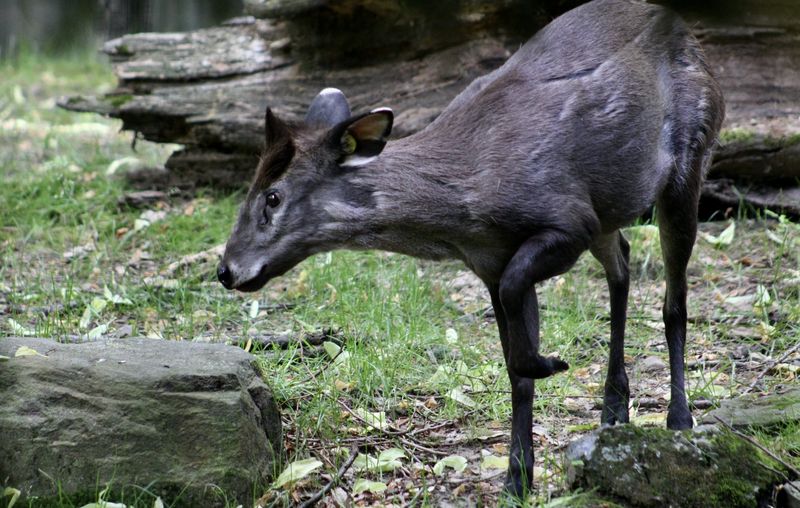
The Tufted Deer, native to the mountainous forests of China, is known for the distinctive tuft of hair on its forehead and small, sharp antlers. Males also sport elongated canine teeth, giving them a saber-toothed look.
These solitary creatures are elusive, making them difficult to spot in the wild. They rely on their agility and camouflaging skills to evade predators.
Deforestation and hunting threaten their existence, prompting conservation measures. The Tufted Deer’s unique appearance and behaviors add to the rich tapestry of China’s wildlife.
Platypus – Australia
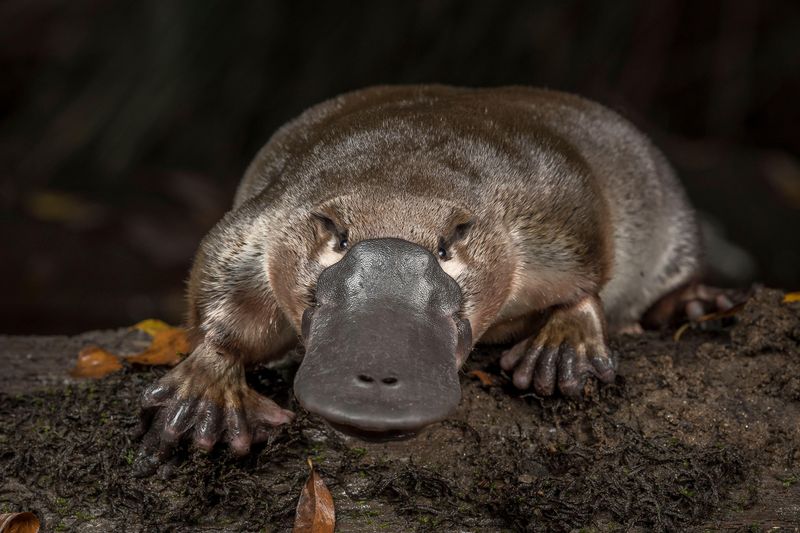
The Platypus, native to eastern Australia, is an enigmatic creature combining features of various animals. With a duckbill, webbed feet, and beaver-like tail, it surprises those who encounter it.
This monotreme lays eggs, an unusual trait among mammals, and uses electroreception to locate prey underwater. Despite its unique characteristics, habitat destruction and water pollution pose threats to its survival.
Conservationists are focused on protecting its habitats and maintaining water quality. The Platypus remains one of nature’s most fascinating and bizarre creatures, captivating scientists and nature lovers alike.
Binturong – Southeast Asia
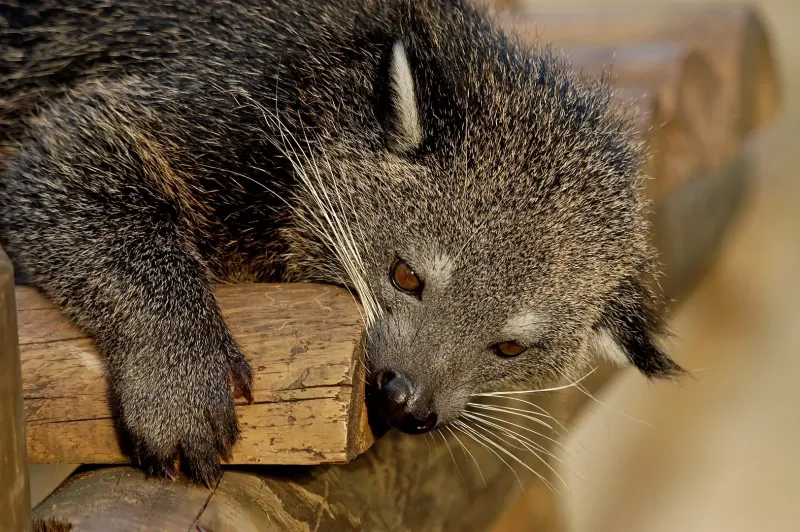
The Binturong, also known as the bearcat, roams the rainforests of Southeast Asia. It possesses a unique prehensile tail, aiding in arboreal navigation. Despite its name, it’s neither a bear nor a cat but related to civets and fossas.
Known for its musky scent reminiscent of popcorn, the Binturong is a frugivore, playing a role in seed dispersion. Habitat loss and hunting for the pet trade threaten its populations.
Efforts to conserve its forest habitat are crucial. The Binturong’s intriguing characteristics continue to enchant those who study it.
Sri Lankan Frogmouth – Sri Lanka
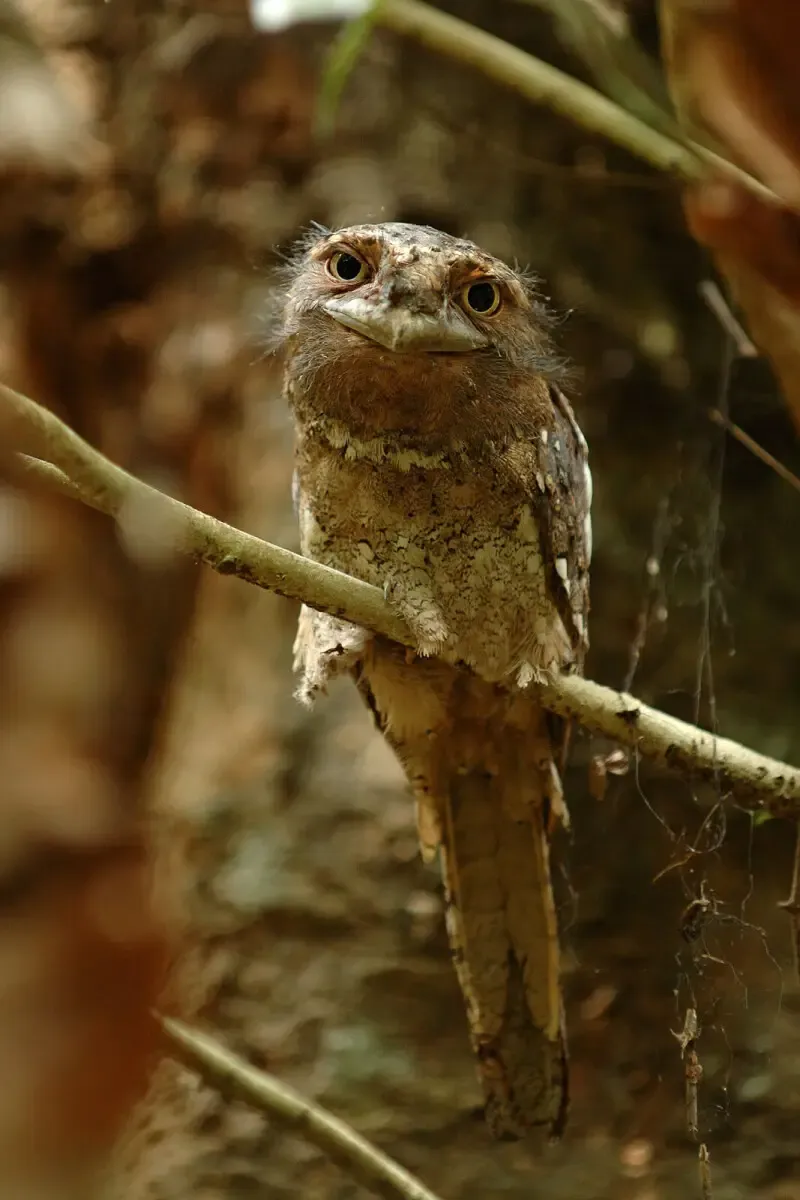
The Sri Lankan Frogmouth is a nocturnal bird found in the dense rainforests of Sri Lanka. It is named for its large, frog-like mouth, which aids in catching insects.
Equipped with cryptic plumage, it blends seamlessly into the forest, evading predators during the day. These birds are usually seen in pairs, communicating with soft, low calls.
Deforestation poses a threat to their habitat, highlighting the need for conservation efforts. The Sri Lankan Frogmouth is a testament to the incredible adaptability and diversity of bird species in the region.
Maned Wolf – South America
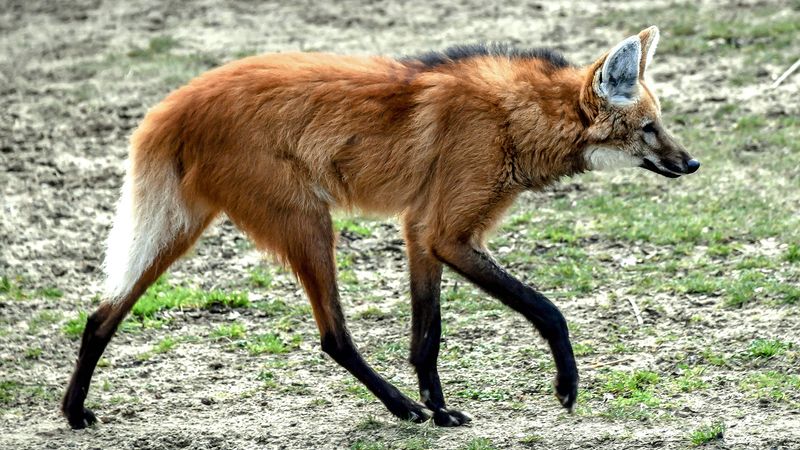
The Maned Wolf, native to the grasslands of South America, is known for its striking reddish coat and long legs, which help it navigate tall grasses. Despite its name, it’s not a true wolf but the only species in its genus.
Its diet includes fruits, small animals, and birds, playing a key role in seed dispersion. The Maned Wolf is solitary, marking its territory with a distinctive scent.
Habitat loss and roadkill are significant threats, leading to protection efforts. The Maned Wolf’s unique appearance continues to intrigue those who observe it in the wild.

